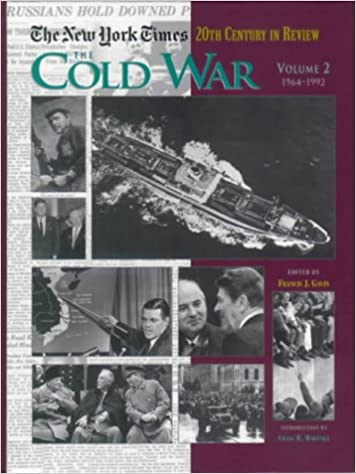

Immediately following World War II, former allies the United States and the Soviet Union began an open yet restricted rivalry that became known as the Cold War and played out around the world until the Soviet Union’s collapse in 1991. Many conflicts, such as the Chinese Civil War, the Korean War, the Vietnam War, and the Arab-Israeli wars, acted as proxy wars for the U.S.-Soviet competition. Other major issues explored in this examination of the Cold War include Europe’s Iron Curtain, the nuclear arms race, decolonization in Africa, and the spread of communism into Latin America and Southeast Asia.
2nd Floor, Reference Collection

The Cold War was a period of great tension and activity. One way to get a feel for the ebb and flow of events is to read the newspaper articles of the time. The articles in this two-volume collection, all from the New York Times, which is generally regarded as the newspaper of record for the United States, can be considered primary historical documents. The first two parts cover the origins of the Cold War, which coincided with the growing power of the United States and U.S.S.R. (1918-47). The remaining seven sections are arranged by broad subject category (e.g., great crises, detente, Vietnam). Within each section, the articles are arranged in chronological order. Also included are the texts of selected speeches, declarations, and other documents. Although international affairs naturally predominate, some articles focus on internal issues.
Coverage includes concepts and doctrines, policymaking, commerce and science, human rights and arms control.